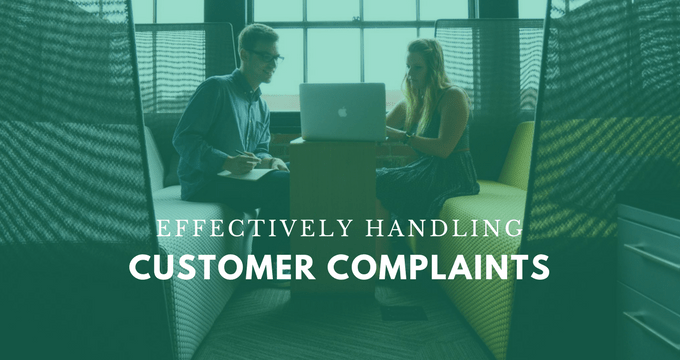
When you own, run, or work for a customer-facing business or one that services other organizations, it’s not a question of IF a customer will have a complaint, but WHEN. At first, this can seem an unwelcome surprise that leaves you wondering how you didn’t cover all of your bases. However, receiving customer complaints and feedback is an incredibly helpful process that can help you to better understand who you are serving and how to better serve them.
In fact, the data suggests that 90% of the time, a customer will continue doing business with you even after a slip-up. The caveat? You actually need to fix the situation the first time. Providing incredible customer service is all about being willing to accept responsibility and correct mistakes in a timely fashion, so your customers know how much you really care. To offer this kind of customer service during a crisis, you need to:
- Listen actively and empathize
- Create a plan for resolution
- Offer a solution
- Correct the mistakes
- Follow up with the customer
Keeping these basic guidelines in mind, we have our own system for handling customer complaints and resolving issues as they arise in our service-based business.
The First Look
The way we first look at incoming client issues or complaints is centered around one question: how quickly can we recover from the error?
Response time and resolution time are key factors here — we understand that, in the case of an unhappy customer, a fast response time quickly goes from a nice-to-have to a must-have. For instance, a customer contacting your business for a simple feature request won’t typically be upset if it takes a day or two to respond. When the situation is more urgent, timely, or larger-scale, it’s necessary to follow up with them as quickly as possible.
We are all human, and we work within an industry where that kind of connection should never be forgotten. When a mistake is made — a wrong file is sent, an accidental keypad stroke inadvertently added a typo, or a missing tilde somehow gets bypassed — it’s our firm belief that the client should know about it right away. Our main goal is for the customer to be confident enough that we (and they!) will recover quickly and efficiently.
The Error Identification
After reviewing the situation and taking a close look at what prompted the complaint, we begin our process of resolution. Our process is first to find out: what kind of error are we looking at? This means that we need to identify if the complaint is purely subjective or objective.
In the nature of our own language services business where every customer is different and holds different goals and expectations, this is incredibly important to identify right away. For example, a writer would understand that sometimes, no matter how well written a piece of translated content might be, the client may not accept it if it’s not done within the style and branding recommendations. The best way to fix a subjective complaint such as this is to review the styles that the client likes, and then try to adapt the writing to that.
When objective errors come into play, we will always send a Quality Review form to a third-party (someone not involved in any way with the original translation) and look for the three types of errors:
- Severe: An error has been found, and a change must be made.
- Moderate: The translation can stand as-is, but would be better optimized if changed.
- Nonessential: A “nice-to-have” change (e.g., another word used is preferred, or a wording inconsistency found across several items)
If the third-party agrees with the client, the change is made. If the third-party agrees with the translator (and the proofreader and the quality reviewer), then the error is considered subjective and an alternative approach is taken.
The Resolution
In any customer complaint-based interaction, the resolution is absolutely the most important step. Once you have identified how quickly you can resolve and recover, as well as what kind of error or issue it is, it’s time to make things right with the customer. At Language Department, we have a policy of re-doing any work that we have submitted with errors, or that have not lived up to the expectations of the customer, for free. It’s incredibly important to our business that we fix any mistakes as quickly as possible so as to not damage the reputation or our company, or that of our customers.
Depending on the industry in question, there are some instances where an actual fix cannot be done that a simple and sincere apology can do wonders. Research by The Nottingham School of Economics found that unhappy customers are more willing to forgive a company that offers an apology as opposed to being compensated. In the findings from the study, 45% of customers withdrew their negative review of a company in light of an apology, whereas only 23% of customers withdrew their negative evaluation in return for compensation.

After fixing the errors or mistakes, resolving the issue, and effectively apologizing for the inconvenience, the crucial final step is to follow up with the customer. Have they received a satisfactory response? Has their issue been completely fixed? Do they have any final feedback about how their claim was handled?
Collecting this kind of information will not only show customers that you honestly care about them, it’s an opportunity to gather more important data and feedback about their experience. When you resolve customer complaints successfully and treat them with genuine respect, you will better understand their needs, retain them as loyal customers, and enhance your business in the long-term.
Want to learn more about how we handle client relationships and customer service? Get in touch with us anytime.




